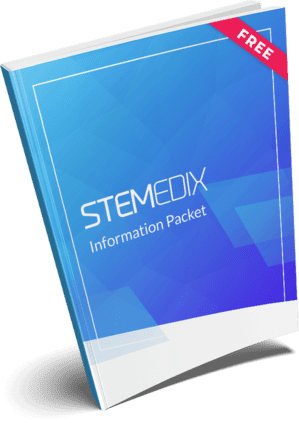In recent years, mesenchymal stromal/stem cells (MSCs) and their exosomes have attracted interest as potential treatments for degenerative diseases. MSCs have unique characteristics such as the ability to renew themselves, differentiate into different cell types, and modulate the immune system. These properties make them valuable in medical research, and both laboratory and clinical studies have shown promising results.
However, there are challenges with using MSCs directly, especially when it comes to allogeneic transplantation, where cells are taken from a donor rather than the patient’s own body. These issues include risks of immune rejection and limited differentiation capabilities. To address these limitations, scientists have proposed using exosomes derived from MSCs, which are tiny particles that can carry therapeutic molecules directly to target cells.
Understanding Intervertebral Disc Disease (IDD)
One of the degenerative conditions where MSCs and their exosomes are being studied is intervertebral disc disease (IDD). The intervertebral disc (IVD) is a complex structure located between the vertebrae in the spine. It consists of three main parts: the inner nucleus pulposus (NP), the outer annulus fibrosus (AF), and the cartilage endplates (CEP). These components work together to allow the spine to move and to absorb mechanical stress. The NP is soft and gelatinous, helping to absorb shock, while the AF is made up of tough, fibrous tissue that surrounds and protects the NP. The CEP, which is less than 1 mm thick, serves as a channel for nutrient transport.
IDD occurs when excessive mechanical stress, genetic factors, or environmental influences lead to the degeneration of these disc components. This results in the loss of cells and tissue integrity within the disc, causing symptoms like chronic low back pain, which is a common issue affecting people as they age. Low back pain due to IDD can significantly impact quality of life, making it a widespread public health concern. Current treatments mainly focus on alleviating pain rather than addressing the root cause, and options like surgery can come with significant risks and side effects.
Role of MSCs in Regenerative Therapy for IDD
MSCs are multipotent cells found in various tissues throughout the body. They can differentiate into many cell types, including those involved in bone, cartilage, and fat tissue formation. This versatility makes them useful in regenerative medicine, especially for conditions like IDD. In treatment, MSCs can be injected into the damaged area, where they help promote healing by transforming into disc-related cells and encouraging the growth of native cells within the IVD. MSCs can also help reduce cell death (apoptosis), increase the production of new cells, and prevent further degeneration.
Using Exosomes as an Alternative to MSCs
Researchers have turned their attention to exosomes, which are small vesicles naturally released from cells. Exosomes are particularly promising because they can carry various therapeutic molecules, such as proteins, lipids, and RNA, directly to target cells. Unlike whole-cell therapies, exosome treatments do not carry the same risks, such as immune rejection or the potential for cells to transform into tumors. Exosomes can also act as delivery vehicles for drugs, thanks to their small size, natural biocompatibility, and ability to travel to damaged tissues.
In the context of IDD, exosomes derived from MSCs can help reduce inflammation, encourage the repair of damaged cells, and improve the overall health of the intervertebral disc. This approach allows for a cell-free treatment that retains many of the benefits of MSC therapy.
Causes and Cellular Changes Associated with IDD
As part of this review, the authors highlight several factors that contribute to the development and progression of IDD. These include aging, genetics, environmental influences, and lifestyle choices. For example, lack of physical activity, smoking, or frequent exposure to vibration can all accelerate disc degeneration. Some people may also have genetic predispositions that make their spinal discs more prone to breakdown. At the cellular level, IDD involves the gradual loss of key cell types, including nucleus pulposus cells (NPCs), which are essential for maintaining the disc’s structure and function. As these cells decrease in number, the disc loses its ability to absorb mechanical stress, leading to further tissue deterioration.
Traditional and Emerging Treatments for IDD
Treatment options for IDD vary based on the severity of the condition. For mild cases, rest, physical therapy, and medications like anti-inflammatory drugs and muscle relaxants are often used to relieve pain. However, these approaches do not stop the underlying degeneration, and pain can become chronic for some patients. In severe cases, surgical interventions, such as spinal fusion, may be necessary, but these procedures come with risks, such as recurrent disc problems and long recovery times.
Regenerative therapies, which aim to repair and restore damaged tissues, have gained attention as a potential solution for IDD. MSCs have emerged as a leading option for regenerative treatment because of their ability to promote cell growth and tissue healing. By injecting MSCs into the affected area, it is possible to enhance the disc’s cellular environment, reduce inflammation, and stimulate the production of new extracellular matrix components.
Potential Benefits of MSC-Derived Exosomes
Using MSC-derived exosomes for IDD treatment offers several advantages over traditional cell therapy. Exosomes are nanosized, making them more effective in delivering therapeutic agents to specific areas of damage. They also carry a variety of molecules that can influence cellular behavior and promote healing. For instance, exosomes can reduce inflammation, encourage the growth of healthy cells, and prevent cell death in the damaged disc. Additionally, their natural compatibility with the body and low risk of triggering immune responses make them a safer option for patients.
Exosome therapy is still in the experimental stages, but early studies have shown promising results in treating various degenerative diseases, including IDD. As researchers continue to explore the therapeutic potential of these tiny vesicles, there is hope that they could provide a viable, less invasive alternative to existing treatments.
New Approaches to Treating Intervertebral Disc Degeneration
The rise in spine-related problems due to modern lifestyles has led to increased interest in finding better treatments for conditions like IDD. While current therapies primarily focus on pain management, regenerative approaches that aim to repair damaged tissues offer a more comprehensive solution. MSCs have shown promise in treating IDD, but their limitations have driven scientists to explore the use of exosomes.
Widjaja et al. conclude that as research progresses, exosome-based therapies could become a safer, more effective option for patients with degenerative disc diseases, potentially improving quality of life for millions.
Source: Widjaja G, Jalil AT, Budi HS, Abdelbasset WK, Efendi S, Suksatan W, Rita RS, Satria AP, Aravindhan S, Saleh MM, Shalaby MN, Yumashev AV. Mesenchymal stromal/stem cells and their exosomes application in the treatment of intervertebral disc disease: A promising frontier. Int Immunopharmacol. 2022 Apr;105:108537. doi: 10.1016/j.intimp.2022.108537. Epub 2022 Jan 29. PMID: 35101851.


 St. Petersburg, Florida
St. Petersburg, Florida
